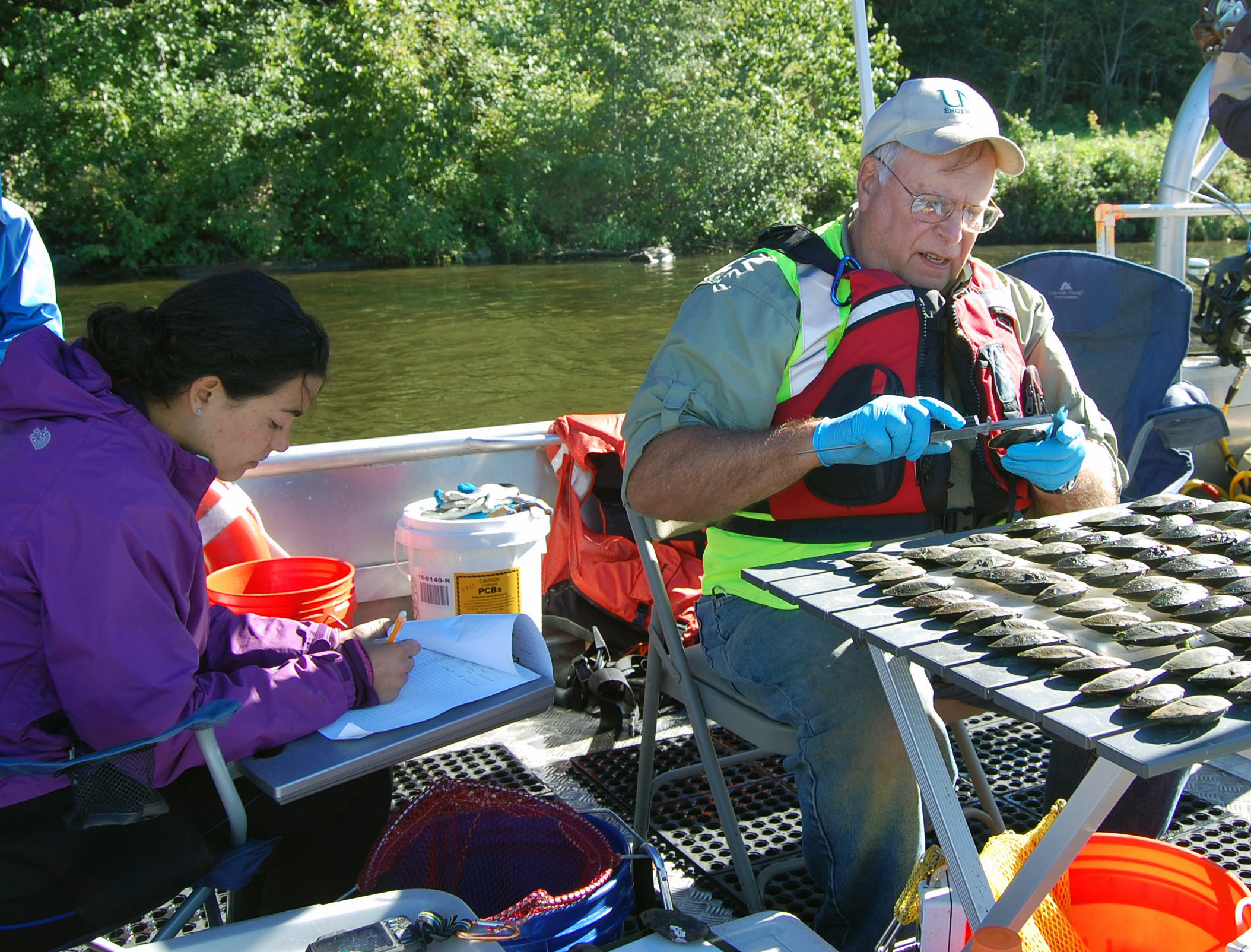Grasse River remediation project work continued, focused on collecting information to be taken into consideration in the design of the remediation project and the restoration of the habitat features in the river following the remediation work.
- Finished sturgeon study; tagged, tracked and released approximately 60 fish for one year; completed studies of mussels in the river; collected, identified and released more than 5,000 mussels; continued work to refine the boundaries of the areas requiring remediation; collected and analyzed sediment samples to help fill in gaps in existing data
- Continued geotechnical investigations along the river to better understand site conditions that must be taken into consideration in the project design
- Conducted Cultural Resource Assessment activities in which archeological experts conducted test digging throughout the project footprint to ensure that no historically significant artifacts will be disturbed during the remediation work
- Continued habitat assessment work with surveys of the shoreline and wetlands in the project area.
- Prepped for 2017 work on landside facilities that will support future in-river work
Sturgeon Study
During 2015 and 2016 a study looking at the use of the lower Grasse River by lake sturgeon was conducted as part of the habitat assessment portion of the project. This study is important because lake sturgeon are a New York State Threatened species, and their use of the river must be understood and taken into consideration in the design of the remediation project. The study was conducted with oversight of the EPA and with input from sturgeon experts and the New York State Department of Environmental Conservation to ensure the proper handling and safety of the fish. All required permits were obtained.
The study had four phases. First, in spring 2015, contractors and sturgeon experts observed certain sections of the river from the shoreline - sometimes at night using lights - to look for evidence of sturgeon spawning. Second, they worked during overnight hours to try to locate any newly born sturgeon that may have drifted into the lower Grasse River.
The third part of the sturgeon study took place in early summer, 2015, and involved catching and tagging sturgeon so their movements could be monitored using radio devices. A tiny radio was surgically implanted into about 60 juvenile and adult sturgeon of various sizes using an approved, common method. The final phase of the study was to track and monitor the movements of the tagged sturgeon for a year using 10 telemetry devices stationed at various points along the shoreline in the project area of the river. Most of the tagged fish were successfully tracked and the data collected is under review.

Summer 2015 Study involving Catching and Tagging Studies to Track Movements [Credit: Christine Tomichek, Kleinschmidt Associates]
Mussel Study
In 2015-2016, as part of the project's pre-design work, Arconic (formerly Alcoa) conducted a study of mussels in the Grasse River. The purpose of the study was to identify the types of mussels in the river and determine whether any threatened or endangered species are present.
We collected, identified, photographed and released more than 5,000 mussels. Divers entered the river from boats and collected "samples" of mussels from defined areas. The samples were brought to the boats for immediate identification and measurement by an expert in the field. Then the mussels were quickly returned to the river in the same area from which they were collected.
No federal or state threatened or endangered mussel species were identified during the work.

Summer 2016 Study Involving Mussel Identification and Measurements
